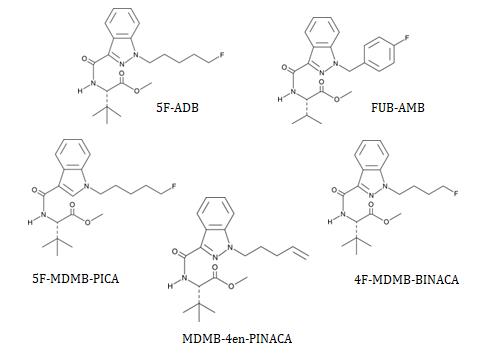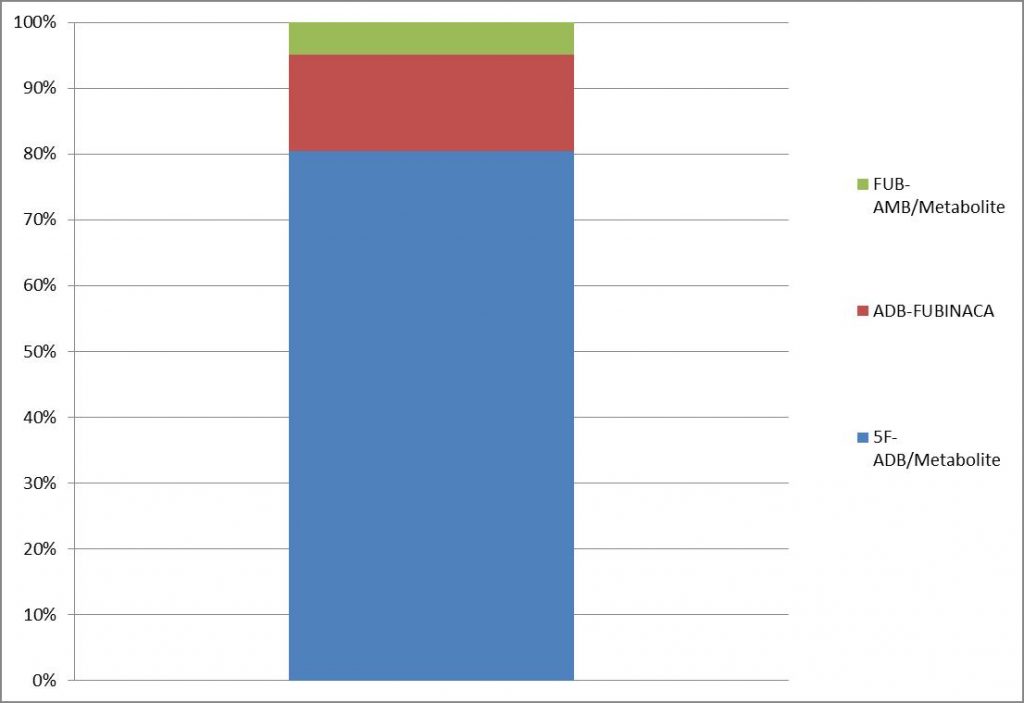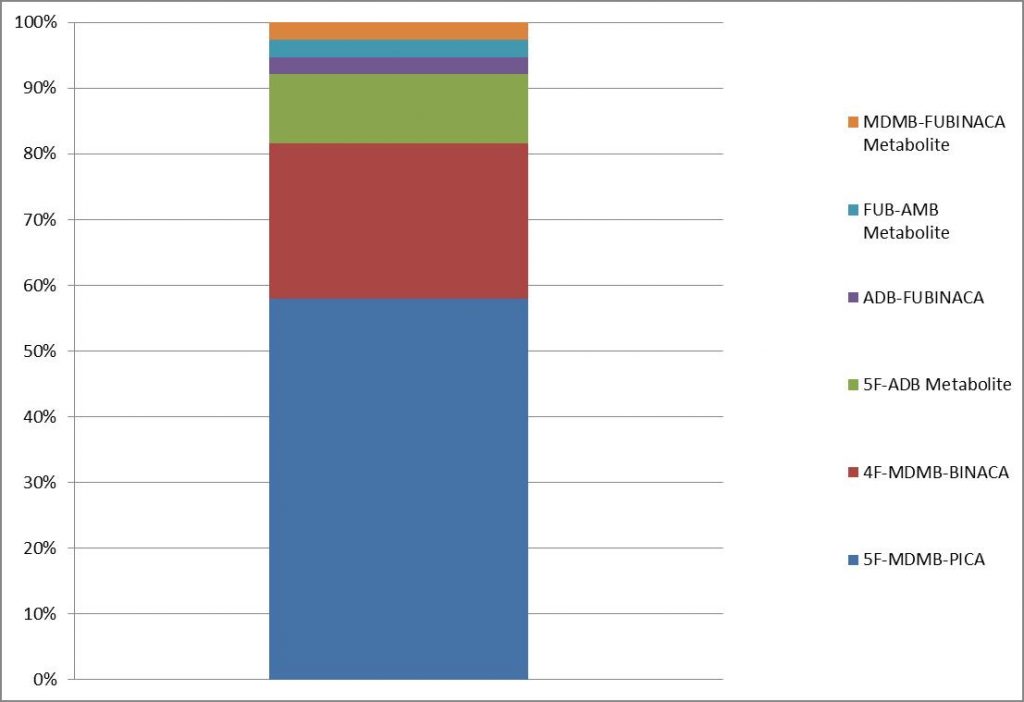by Kevin Shanks, M.S., D-ABFT-FT
Note: This is an excerpt of a presentation given to the LTG (London Toxicology Group) in June 2021.

Packages of SCRA products
Photograph by Kevin G. Shanks (2015)
Synthetic cannabinoid receptor agonists (SCRA) are laboratory synthesized chemicals which bind to cannabinoid receptors in the human body. There are thousands of these compounds in existence and there is no way to discuss all of them, but since 2009, many of these compounds have been sold as ingredients in smoking blends and herbal incense/potpourri in the United States. Over the last several years, the government has enacted various pieces of legislation controlling these compounds as Schedule I controlled substances and, currently, there are 43 SCRA considered to be controlled substances. The prevalence of specific synthetic cannabinoids vary over time and new compounds routinely emerge and disappear.

Chemical structures of 5 Common SCRA
Structures drawn by Kevin G. Shanks (2021)
According to data from the Center for Substance Abuse Research (CESAR) via quarterly Emerging Threats Reports (ETR), the prevalence of 5F-ADB and FUB-AMB have waned over the last couple of years, and the most prevalent compounds reported in 2020 were 5F-MDMB-PICA, followed by the MDMB-4en-PINACA and 4F-MDMB-BINACA. If you look at data from the National Forensic Laboratory Information System (NFLIS), compiled by the Drug Enforcement Administration (DEA) via non-biological evidence seizure, for 2020, the most common SCRAs were 5F-MDMB-PICA, MDMB-4en-PINACA, and 4F-MDMB-BINACA.

Detection of SCRA in Blood at Axis, 2018
Data compiled by Kevin G. Shanks (2021)

Detection of SCRA in Blood at Axis, 2019
Data compiled by Kevin G. Shanks (2021)

Detection of SCRA in Blood at Axis, 2020
Data compiled by Kevin G. Shanks (2021)
If we look at Axis Forensic Toxicology from the last few years, we can see that our data for postmortem toxicology mirrors what is reported by ETR and NFLIS. In 2018, 5F-ADB was the most prevalent SCRA (80.4% positivity in all sample tested for SCRA), while in 2019, 4F-MDMB-BINACA was the most prevalent compound (42.3% positivity). During 2020, the most prevalent compound reported in postmortem toxicology casework for synthetic cannabinoids testing was 5F-MDMB-PICA (60.0% positivity). During 2020, three compounds (5F-MDMB-PICA, 4F-MDMB-BINACA, and 5-ADB) accounted for 90+% of positive synthetic cannabinoid detections in blood samples tested.

Chemical structures of 3 Emerging SCRA
Structures drawn by Kevin G. Shanks (2021)
Recognizing this ever changing scope of testing, we must always look towards the future and we need to be aware of newly reported SCRA compounds. Some of these compounds include 4F-MDMB-BICA, ADB-BINACA, and ADB-HEXINACA. What more should we expect in the future? We should expect more of the same. The beat goes on and new compounds emerge. They become prevalent. They disappear. And then new compounds take the place of the old ones.

The Puzzle Pieces of an SCRA
Image drawn by Kevin G. Shanks (2021)
Axis Forensic Toxicology continues to adapt SCRA testing to provide a relevant scope of analysis and aid in the medical-legal investigation of death and poisoning. For more information, the current scope of testing offered by Axis Forensic Toxicology can be found in the online test catalog (Order Code 42130, Synthetic Cannabinoid Panel, Blood).
If you would like a full copy of this presentation, please contact [email protected].
References
- Synthetic Cannabinoid Receptor Agonists (2020 – 2021). K. Shanks. London Toxicology Group (LTG) Virtual Meeting. (2021).
- Synthetic Cannabinoids. Disposition of Toxic Drugs and Chemicals in Man. Twelfth Edition. Randall C. Baselt. Biomedical Publications. Pages 1979-1986. (2020).
- Synthetic Cannabinoid Receptor Agonists. Novel Psychoactive Substances: Classification, Pharmacology, and Toxicology. Paul Dargan and David Wood. Academic Press (Elsevier). 317-338. (2013).
- Axis Forensic Toxicology. Laboratory Data. Indianapolis, IN. (accessed July 2021).
